I have visited Middleton Lodge for a few years, watching its transformation from a private house to a rural retreat and always wondered what was happening to the Grade ll*-listed walled garden. It was impossible not to imagine how magnificent it had once had been. The current owner of Middleton Lodge, James Allison, remembers when it was a working garden. “It was wonderful, but bit by bit it fell into disrepair. It was grazed by sheep, and became a Christmas tree nursery. As we gradually restored the rest of the estate, the challenge was how to make the walled garden commercially viable.”
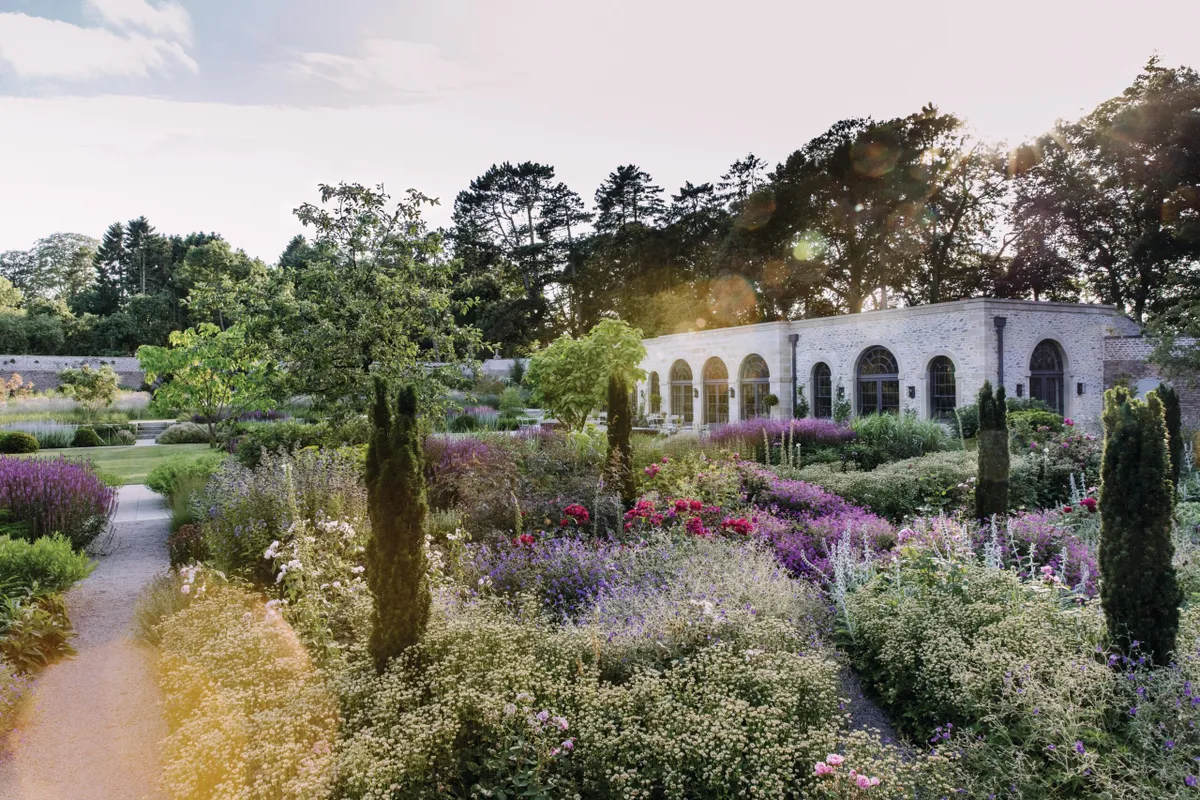
Abandoned walled gardens are not that uncommon, even though many of them have been restored with spectacular success. They had their heyday in the 18th and 19th centuries, when labour was inexpensive, but after the Second World War, when gardeners found better-paid work in the towns
and cities, many walled gardens fell into decline. With little money for upkeep, most walled gardens went the way of Middleton, which is why, over the past few years, watching it go from wasteland to one of the most beautiful gardens in the north of England has been something of a miracle.
In brief
Name Middleton Lodge. What Historic, walled, kitchen garden designed by Tom Stuart-Smith. Where North Yorkshire. Size Two acres. Soil Well-drained and fertile. Climate Sheltered, but long winters and temperate summers. Hardiness zone USDA 9b.
If James Allison and his architect wife Rebecca Tappin have presided over the restoration of this 18th-century estate with elegant house, it is the multi-award-winning garden designer Tom Stuart-Smith who has realised their plans for the walled garden. Tom is internationally famous for his large-scale public gardens such as RHS Wisley and the historic Italianate landscape at Trentham. Equally renowned are his designs for private gardens, with their prairie-style grasses and late-summer-flowering perennials. His brief for the Kitchen Garden at Middleton was to make an intimate space with something for every season, to function primarily as the backdrop to the Fig House.
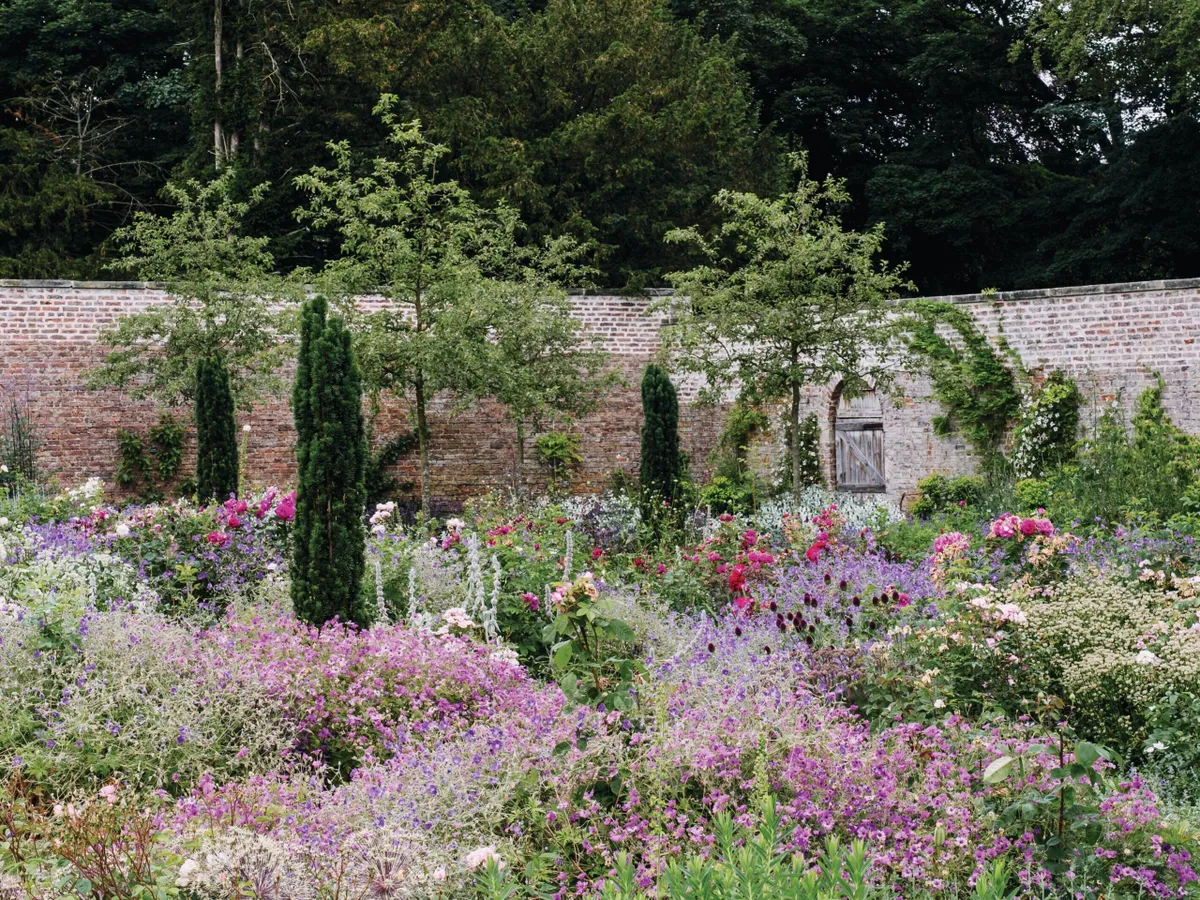
While the design incorporates many of Tom’s trademark elements, the result is more formal than many of his gardens, which have a certain wild and shaggy feel. Creating intimacy in a two-acre garden that holds its own in every season is not easy. Tom began by dividing the garden, which is all on one level, into four distinct areas designed to reach their peak at different times of the year. Each area has its own unmistakable character, designated by spring, summer, a prairie garden and a fruit and vegetable garden, the latter reflecting how the garden would once have been used. As one part of the garden quietens, another springs up, and there is always an area that is flowering, fruiting or sculptural.
Read more about the garden below
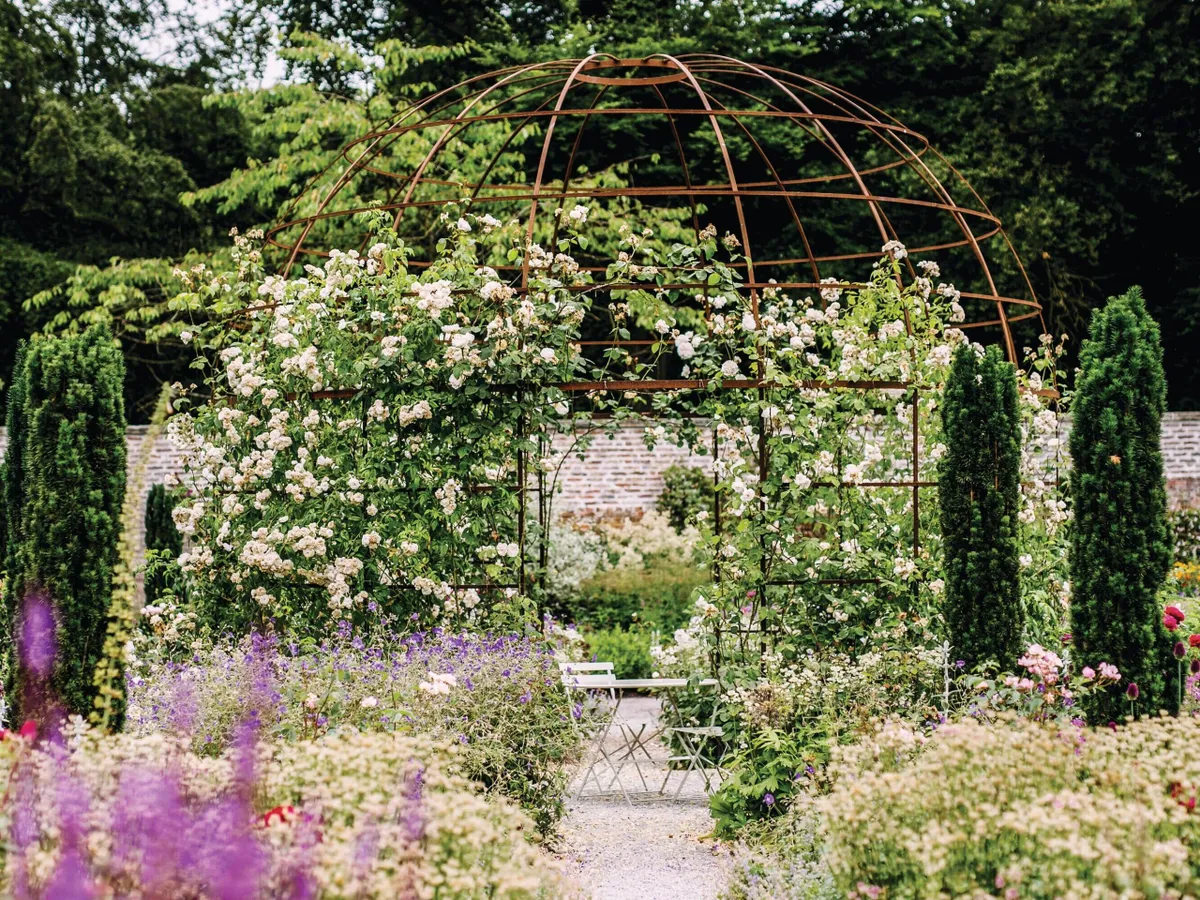
One of the four iron arbours trained with two cultivars of vigorous climbing roses. Rosa ‘Sombreuil’ is a heavily scented, creamy, blush-white, double rose with glossy, dark-green foliage, while the smaller-flowered Rosa ‘Aimée Vibert’ has sprays of fragrant, white roses, and blooms in late summer.
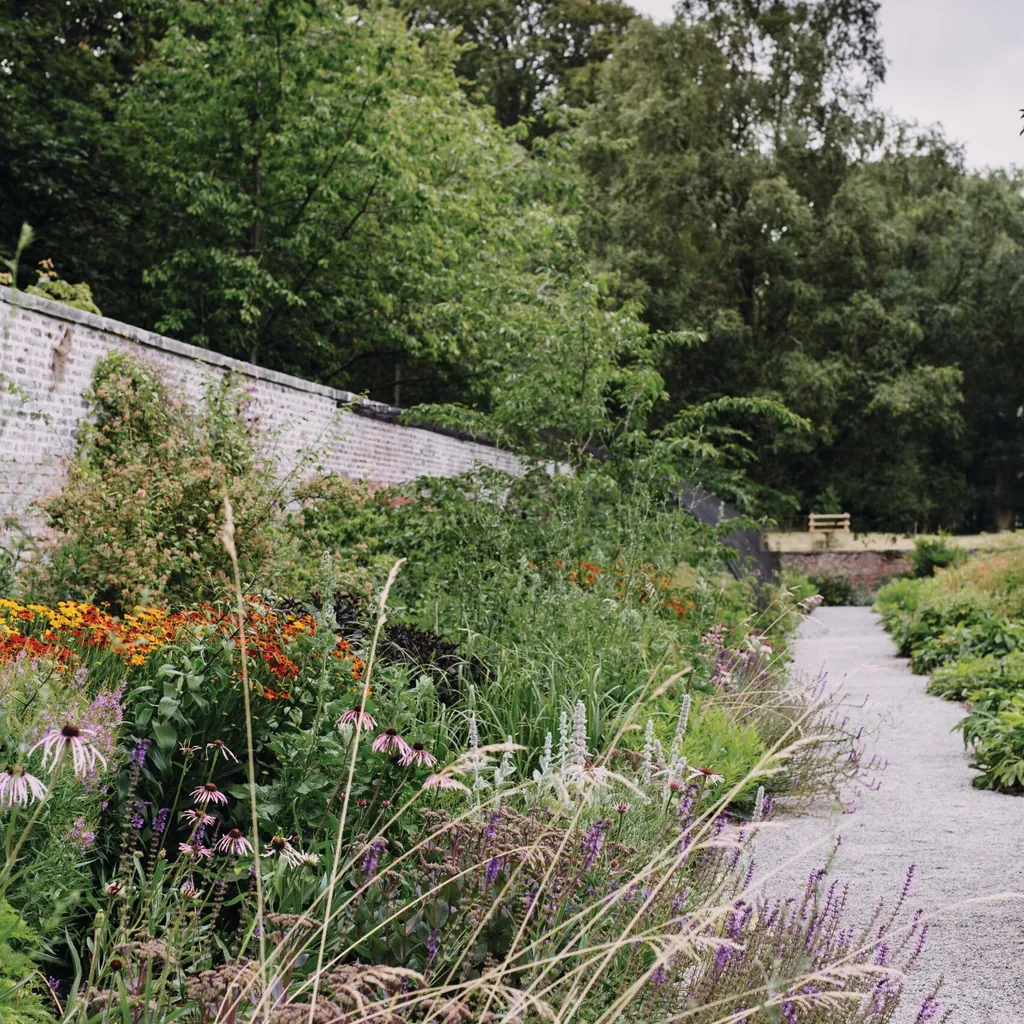
Along the walls are plants that thrive in the reflected heat such as Echinacea pallida, Helenium ‘Moerheim Beauty’ and Helictotrichon sempervirens.
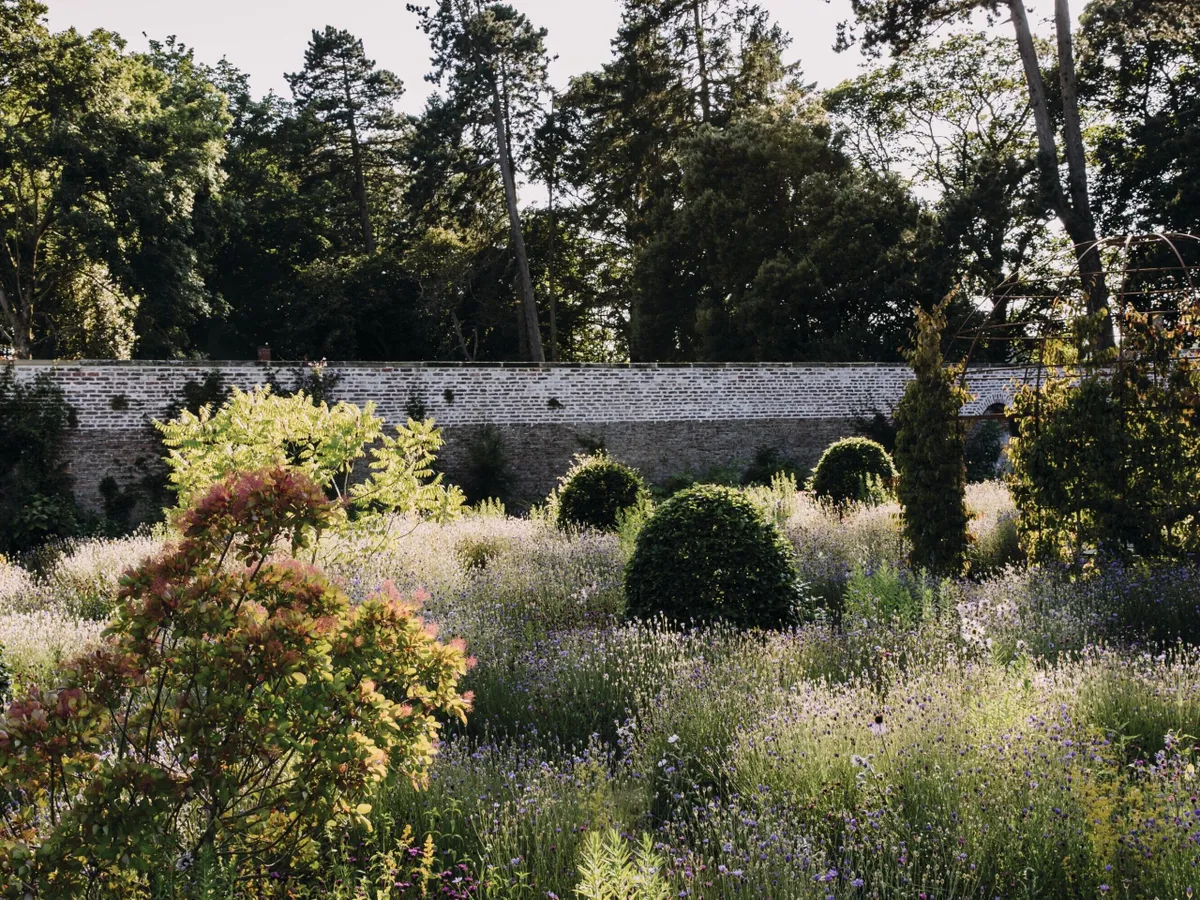
Within the prairie style planting of delicate perennials such as Catananche caerulea (which also has long lasting, elegant seedheads) are clipped mounds of beech and the dark-foliage shrub Cotinus coggygria.
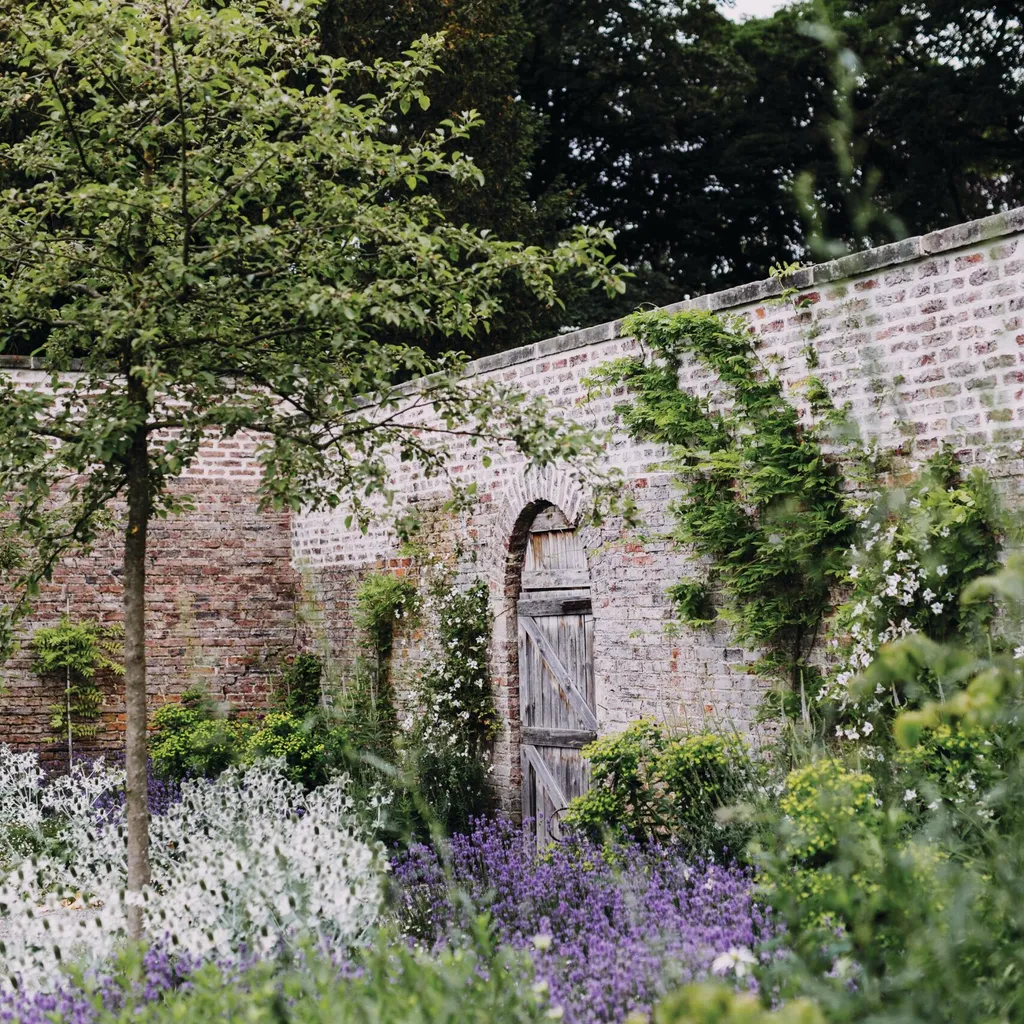
By the door in the walled garden, four crab apples (Malus ‘Evereste’), which have pure-white blossom in spring and red fruits in autumn and winter, overhang borders planted with Lavandula angustifolia ‘Munstead’.
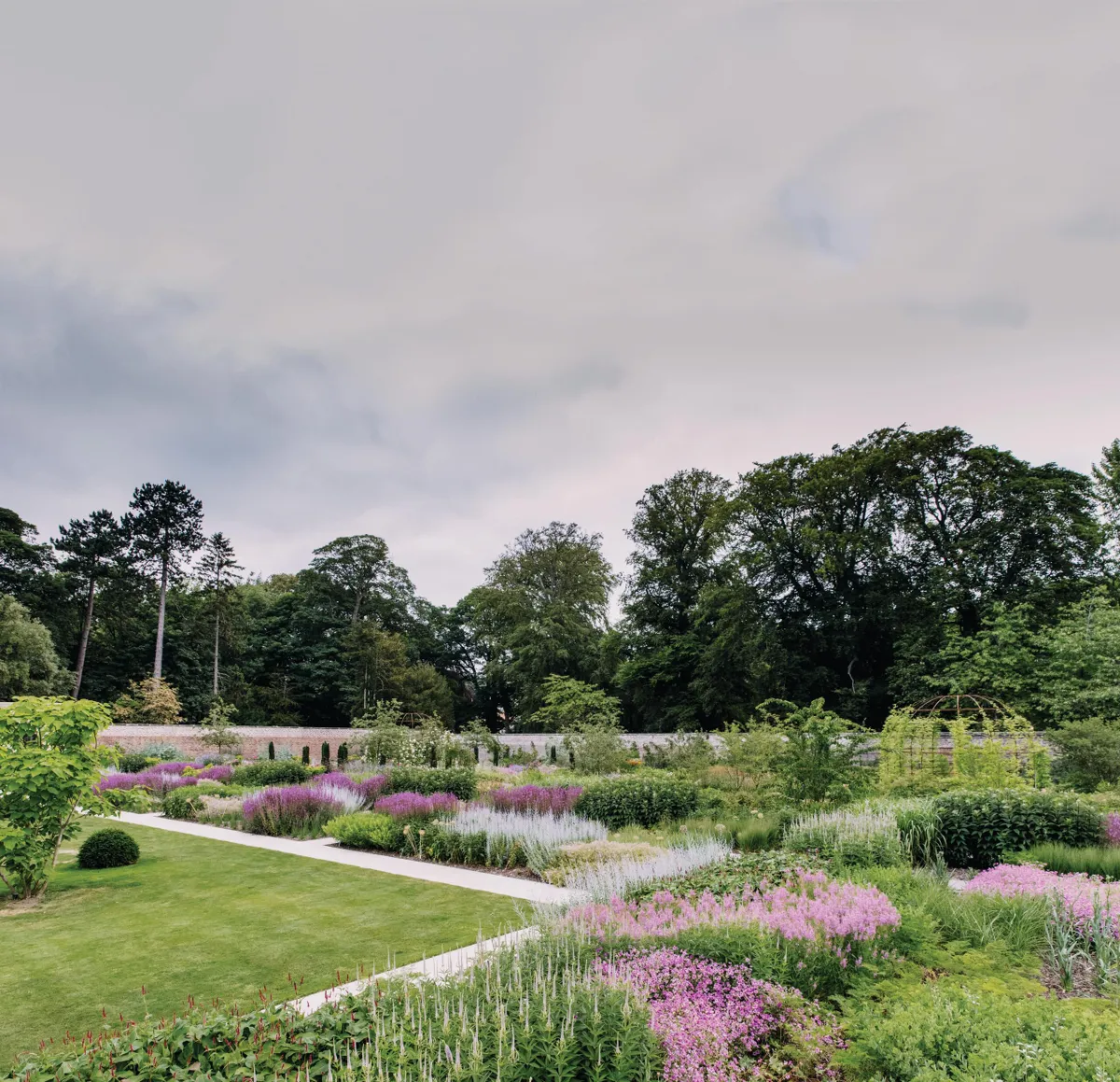
Long-flowering perennials, such as Geranium ‘Nimbus’ and Veronicastrum virginicum ‘Album’, spill over the path. The plants here are deliberately low in habit, so that the rest of the garden can still be seen.
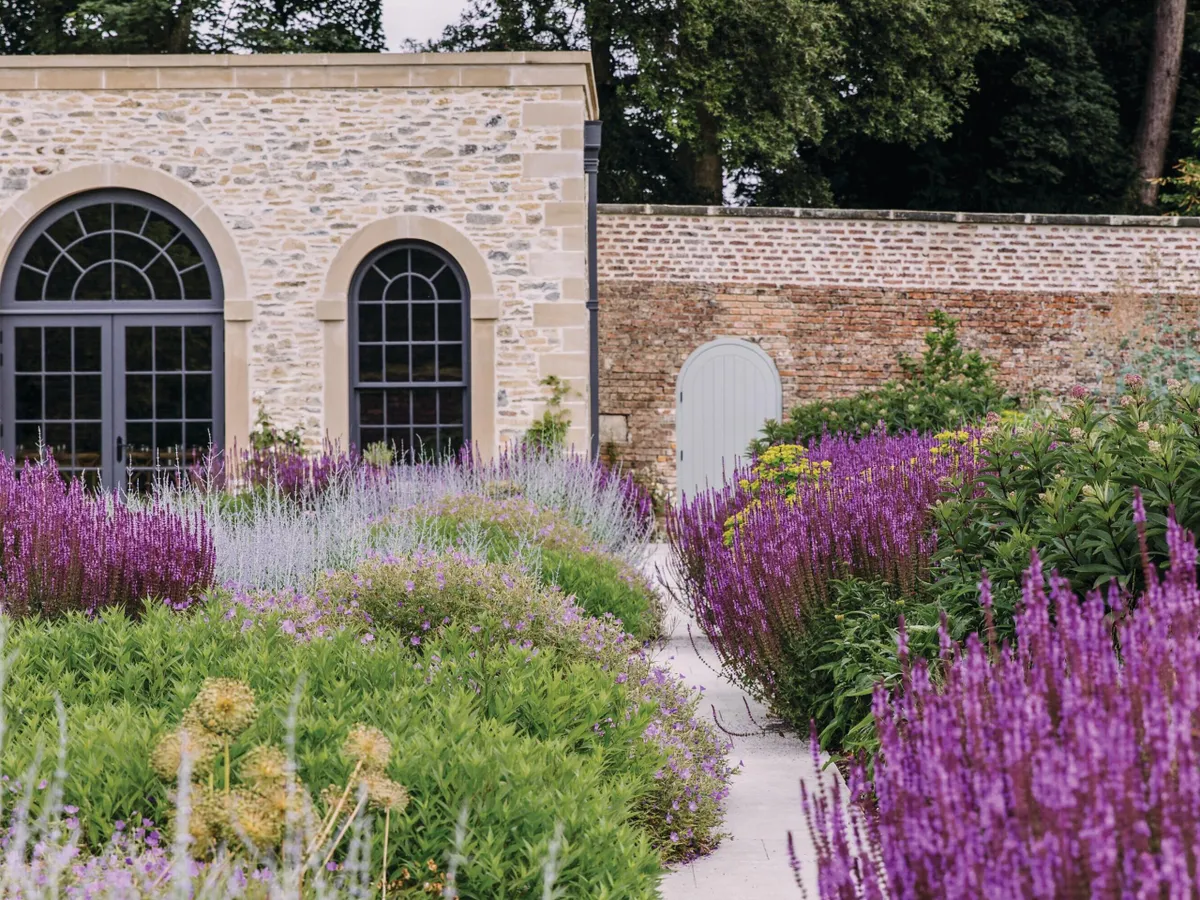
A sense of enclosure is created around the Fig House by dense mounds of perennials that hold their shape, such as Salvia nemerosa ‘Amethyst’ and Persicaria amplexicaulis Taurus (= ‘Blotau’). These are punctuated with the seedheads of late-spring-flowering Allium hollandicum ‘Purple Sensation’.
Useful information
Address Middleton Lodge, Kneeton Lane, Middleton Tyas, Richmond, North Yorkshire DL10 6NJ. Tel 01325 377977. Web middletonlodge.co.uk Open The Kitchen Garden hosts open days throughout the year with tours led by the gardening team. See website for details.
